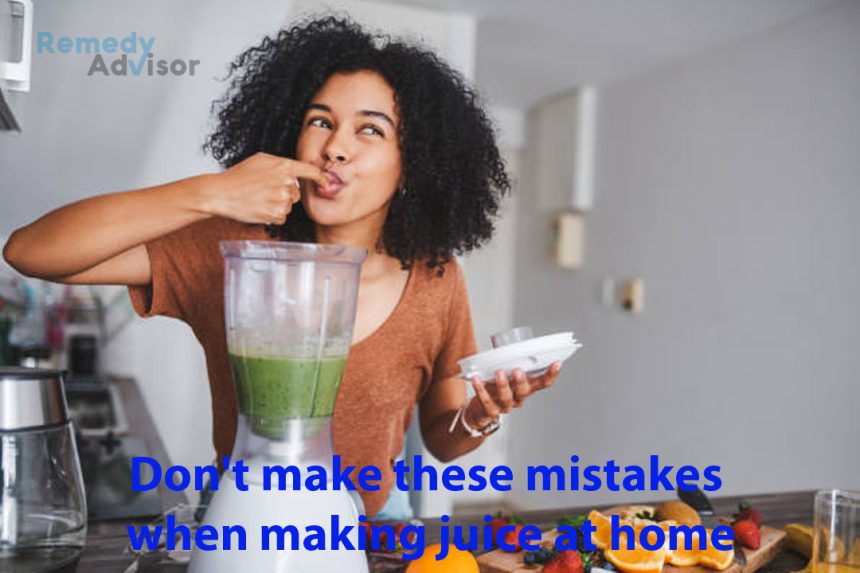It’s easy to make juice, but there are a few things you should keep in mind to get the best results. Even though these rules are simple, they can make a difference if you follow them.
• Wash all fruits and vegetables before making juice
Most grocery stores and health food stores sell fruit and vegetable washes. These washes can get rid of dirt and mold on the surface. They can also cut down on the amount of pesticides on the surface. But it’s important to know that they might not be able to get rid of pesticides from the plant’s water and fiber. Make sure to cut off any moldy, bruised, or damaged parts of your food to make it even safer.
• Always peel oranges, tangerines, tangelos, and grapefruit before juicing
Before you juice oranges, tangerines, tangelos, and grapefruit, you should make sure to peel them. The oils in the skins of these citrus fruits are volatile and can cause stomachaches and other digestive problems. If the lemon or lime peels are organic, you can juice them, but they have a unique taste that may not be what you want in most recipes, so it’s best to peel them. But you should leave as much of the white pithy part as possible on the citrus fruit because it has the most vitamin C and bioflavonoids, which work together to boost your immune system.
Mangoes and papayas should always be peeled because their skins contain an irritant that can hurt you if you eat too much of it. Also, it’s important to peel all produce that isn’t organic, even though the most nutrients are in and near the skin. For example, cucumbers that are not organic are often waxed, which makes pesticides stick to them. You wouldn’t want to drink your juice if it had wax or pesticides in it. Lastly, the most pesticides are found in the skins and peels of sprayed fruits and vegetables.
• Remove pits, stones, and hard seeds
To get peaches, plums, apricots, cherries, and mangoes ready to eat, you need to take out their pits, stones, and hard seeds. On the other hand, fruits with soft seeds like cucumbers, oranges, lemons, limes, watermelons, cantaloupes, grapes, and apples are easy to juice. Due to the chemicals in apple seeds, though, it is best not to juice a lot of them for children under the age of two. Still, older children and adults shouldn’t have any trouble with these seeds.
• Stems and leaves can be used to make juice
Most fruits and vegetables, like beet stems and leaves, strawberry caps, celery leaves, broccoli stems, and small grape stems, can be juiced to get their nutrients. But bigger grape stems should be thrown away because they can damage the blade of the juicer. Carrot and rhubarb greens should also be taken out because they have harmful chemicals in them. Also, it’s best to cut off the ends of carrots because that’s where mold usually starts to grow first.
• Cut fruits and vegetables into sections or chunks
Cut or chop fruits and vegetables into pieces small enough to fit through the juicer’s feed tube. Over time, you will learn which fruits and vegetables can be put in whole and which sizes work best for your machine. If your juicer’s feed tube is wide, you may not have to cut as much.
• Some fruits and vegetables don’t juice well
Many fruits and vegetables contain a lot of water, which makes them great for making juice. But bananas, mangoes, papayas, and avocados don’t have as much water as other fruits and aren’t good for juicing. Instead, you can blend them with other juiced fruits and vegetables and use them in cold soups and smoothies. For example, you can make a tasty and healthy raw soup by adding avocado to a juice blend.
• Drink your juice as soon as you can after it’s made
If you can’t drink your juice right away, you can keep it in the fridge for up to 24 hours in an insulated container like a stainless steel water bottle, thermos, or any other opaque, airtight container. Light, heat, and air can easily destroy the nutrients in the juice, so it is important to keep them safe. Keep in mind that the juice will lose more nutrients the longer you keep it. If the juice turns brown, it has lost most of its nutritional value because it has oxidized. Also, the juice might go bad after 24 hours.
But I want to say that when I had chronic fatigue syndrome, I only had the energy to juice in the middle of the day, and I would keep some juice for up to 24 hours. Even so, I was able to get better, which shows that the juice I had stored had enough nutrients. But keep in mind that melon and cabbage juices don’t keep well, so it’s best to drink them as soon as you make them.







